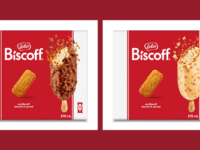 Your customers are really other people’s customers who occasionally buy from you. – Professor Andrew Ehrenberg, Statistician and Marketing Scientist.
Your customers are really other people’s customers who occasionally buy from you. – Professor Andrew Ehrenberg, Statistician and Marketing Scientist.
Shopper repertoires can and do change over time, but are difficult to influence directly in store without promotion or ‘new news’.
Knowing how your brand or product fits into repertoire is vital, but what happens when brand blurring occurs? When bookshops sell coffee and supermarkets sell credit cards? How far can you stretch your brand? The key is in understanding the role and context of repertoire and consumption.
Once upon a time, brands and retailers were clear and simple about their core offering. But as the race to innovate and capture an increasingly more competitive share of basket heats up, channel and brand blurring is on the rise. Just look at the increase in the quality of store brands and private labels.
A visit to my local supermarket now means I can get my dinner, petrol, insurance, credit card, socks, music, rewards, and recipes all in one go. I only need to remember the name ‘Jim’s Group’ for literally dozens of services from bin cleaning and building inspections to computer services and conveyancing, and diggers and dog washes to finance and fencing.
And it doesn’t stop there. In the UK, Virgin, the brand with one of the widest range of business lines ever, has just gone back to their roots, placing the name and label artwork of The Sex Pistols – the first band first signed to Richard Branson’s Virgin Records – on a series of Virgin Money credit cards to celebrate the brand’s heritage and difference.
The alignment is described by the bank’s director of cards, Michele Greene, in an interview with The Guardian: “The Sex Pistols challenged convention and the established ways of thinking – just as we are doing today in our quest to shake up UK banking”. But the public hasn’t responded so favourably – the general view appears to be that the Sex Pistols have ‘sold out’.
So what may seem like a clever synergy, in fact, begs the question about the value of the move and underpins the need for solid research into understanding brands and the role they play in repertoires.
Always consider consumption
Repertoires of shoppers are built up and solidified over time through experiences, media exposures and word of mouth. They are their mind’s way of filtering the plethora of choices down to a manageable set, whether that is the brand of toothpaste to choose or what fruits to put into your basket.
It is vital to know how your brand or product fits into a shopper’s repertoire as it can influence all aspects of the purchase journey – from your TV ad to the product on the shelf and even future innovations.
 The first and most critical step is to understand the context of the repertoire, and that begins with understanding the consumption occasion.
The first and most critical step is to understand the context of the repertoire, and that begins with understanding the consumption occasion.
Let’s take a vodka brand. You need to put yourself into the shopper’s mind and ask: what is their repertoire, and what is the context that your brand exists in? Is it vodka? Or is it spirits, or alcohol, or beverages?
Knowing this specific will help you to understand the decisions that the shopper will make in the store and what your competition is for a place in their basket.
In this instance, are you competing against vodka brands, other spirits categories, or is it perhaps beer and wine as well? And what else are they also searching for?
You asked for icecream?
At TNS we recently worked with a premium ice cream manufacturer who sought ways to grow market share by increasing spend amongst their less loyal repertoire buyers.
We used an ethnographic approach combining filming, eye-tracking and shopper interviews to help understand the conversion process for the category and reveal the precise interruptions that would trigger increased sales.
While previous research focused on price, our ethnographic approach revealed that at-fixture decision-making actually focused on flavour. The client’s flavour variants suffered from low visibility and repertoire buyers tended to miss them.
A pack redesign to increase visibility of flavour variants, together with improved signage and off-shelf communication increased sales by almost a third when rolled out across a test region.
Four insights to revealing repertoire
The question remains as to whether there is true loyalty in the era of brand blurring or is it that the smartest brands and channels – who keep their niche as their strength but introduce other attributes like more value, convenience or options – are managing the role of repertoire? As you consider how your brand fits in to the repertoire of a shopper, remember:
- Pure brand loyalty is rare and your shoppers will, on average, buy other brands more often than yours.
- Repertoires play a significant role across all choices that shoppers make – from what store to visit to the types of items to put in their basket.
- Shopping is habitual and brand repertoires are often ‘hardwired’ through years of media exposure and brand experiences, but they can be influenced and changed in the store.
- It is critical to make your brand stand out in store. If you are ‘in the repertoire’ but the shopper spots a competitor brand first, your chances of being chosen diminish. Ensure that your packaging, position on shelf, and POS materials all help trigger the shopper association with your brand or product.
Peter Firth is a director at TNS, the world’s largest shopper insights agency.











